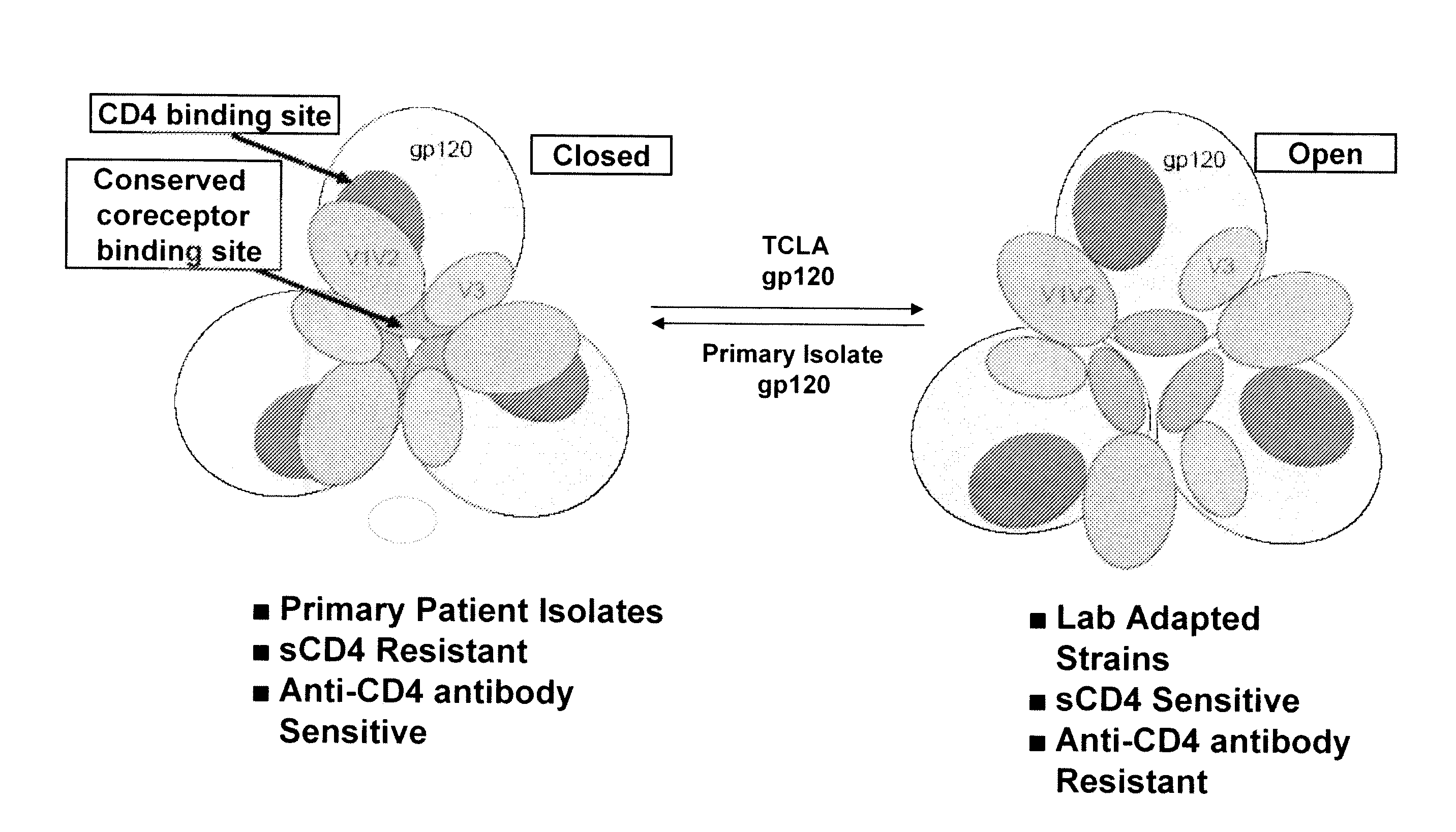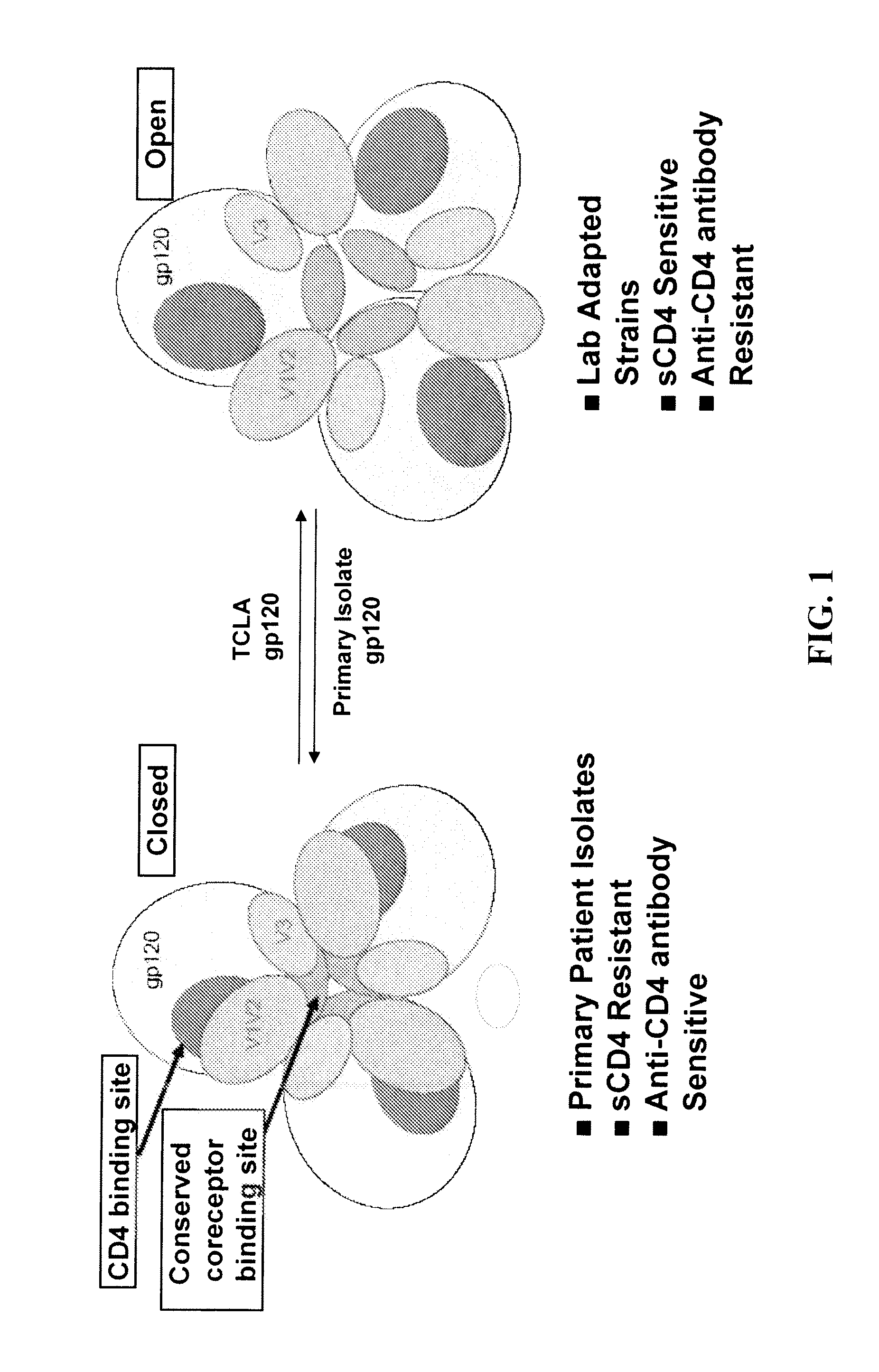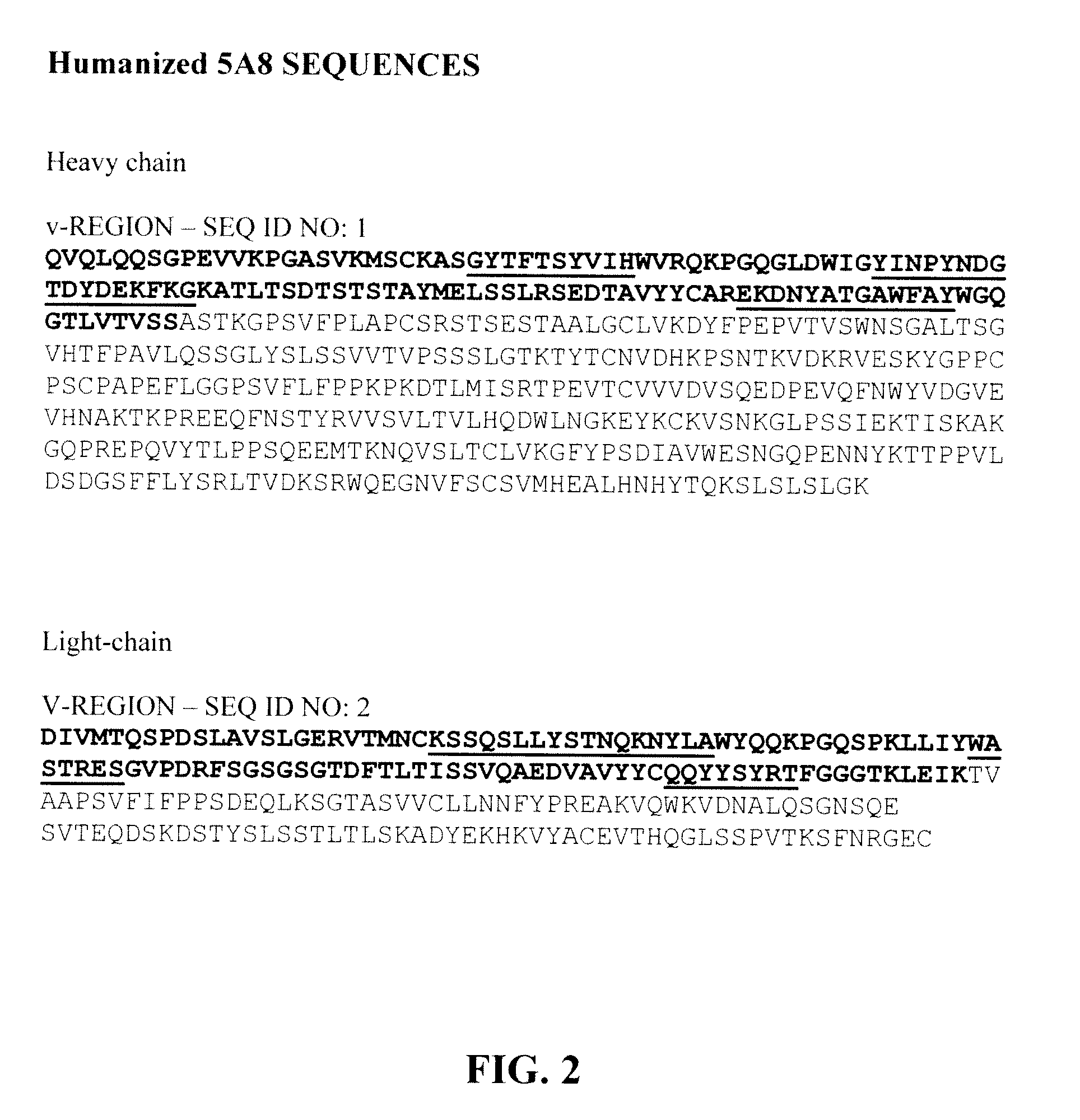Methods and compositions for the inhibition of HIV infection of t cells
a technology of t cell and composition, which is applied in the direction of immunoglobulins, antibody medical ingredients, peptides, etc., can solve the problems of infecting the cell, infecting the virus, and destroying the helper t cell when released
- Summary
- Abstract
- Description
- Claims
- Application Information
AI Technical Summary
Benefits of technology
Problems solved by technology
Method used
Image
Examples
example 1
Recombinant Virus Assay for Determining In Vitro Susceptibility to Drug
[0101]Treatment of HIV-infected patients with a first entry inhibitor results in viruses that exhibit increased resistance to the first inhibitor and increased susceptibility to a second entry inhibitor. This was demonstrated by isolating 5A8 resistant viruses from HIV-infected patients treated with 5A8 and testing the susceptibility of those viruses to sCD4.
[0102]Viruses to be tested were isolated from subjects which received the entry inhibitor 5A8. In this trial, 5A8 was administered as a single new drug to 22 HIV-1 infected subjects that had stable baseline viral loads of >5000 copies / mL and CD4+ cell counts >100 / L. Subjects were randomized among 3 cohorts according to the following schedule:
Cohort ACohort BCohort C[5A8]25 mg / kg10 mg / kg25 mg / kgfirst dose;6 mg / kgsubsequent dosesFrequencyOnce every 7Once every 14Once every 14days for 9 weeksdays for 9 weeksdays for 8 weeks
[0103]At each visit when 5A8 was admini...
example 2
Analysis of sCD4-Fc Variants by ELISA
[0111]Variants of sCD4 can be tested for their ability to bind HIV according to the following assay. A mouse monoclonal antibody (Sim-2) was used to detect binding of sCD4 variants. SIM2 is diluted in PBS to a final concentration of 0.2 μg / ml and coated on 96-well plates at 100 μl per well. The plates are incubated overnight at room temperature to ensure attachment of the antibody to the plate. The solution is then removed and the plates are washed two to three times with phosphate buffered saline containing TWEEN® (PBST).
[0112]Non-specific binding sites are blocked using 200 μl of 2% BSA / PBST, incubating for 30 min at room temperature. Wells are then washed twice with PBST. Variants to be tested are added to the plate at 100 μl / well. Each sample is done in duplicate. Appropriate negative controls are provided using either buffer or an irrelevant peptide that is not recognized by SIM2. Samples are incubated at room temperature for 1-2 hr, followe...
example 3
Analysis of Binding of sCD4-Fc Variants to gp120 by FACS
[0114]In this experiment gp120-transfected HeLa cells are resuspended at a concentration of 1×106 HL2 / 3 cells in 50 μl of ice-cold FACS buffer. Cells are divided into two tubes at 25 μl per tube. Testing samples are added at a volume of 25 μl to one tube and 25 μl of an irrelevant Fc-fusion protein to the other tube (served as negative control). Samples are incubated on ice for 10-30 min.
[0115]Following the incubation, cells are pelleted and washed with 0.5 ml FACS buffer. Cells are then resuspended in 25 μl of FACS buffer and mixed with 25 μl of diluted R-Phycoerythrin (R-PE)-conjugated anti-human IgG Fe antibody. The samples are incubated on ice for another 10-30 min followed by centrifugation and two washes using 0.5 ml FACS buffer. Cells are resuspended in 0.5 ml FACS buffer and analyzed using flow cytometry. The amount of sCD4-Fc of a particular variant bound to the gp120 expressing cell is measured as a function of fluore...
PUM
| Property | Measurement | Unit |
|---|---|---|
| Electrical resistance | aaaaa | aaaaa |
Abstract
Description
Claims
Application Information
 Login to View More
Login to View More - R&D
- Intellectual Property
- Life Sciences
- Materials
- Tech Scout
- Unparalleled Data Quality
- Higher Quality Content
- 60% Fewer Hallucinations
Browse by: Latest US Patents, China's latest patents, Technical Efficacy Thesaurus, Application Domain, Technology Topic, Popular Technical Reports.
© 2025 PatSnap. All rights reserved.Legal|Privacy policy|Modern Slavery Act Transparency Statement|Sitemap|About US| Contact US: help@patsnap.com



